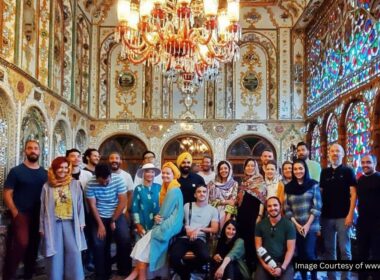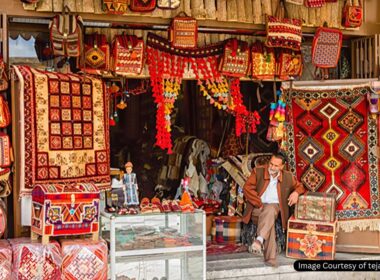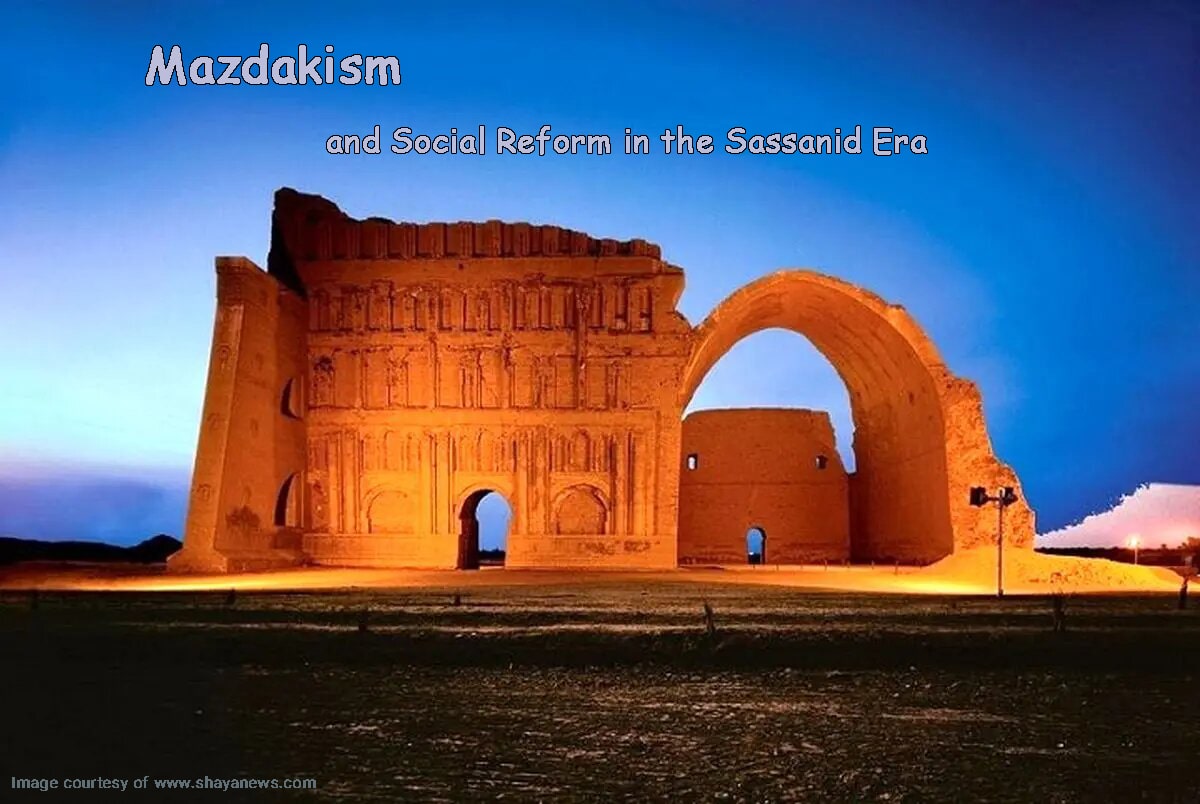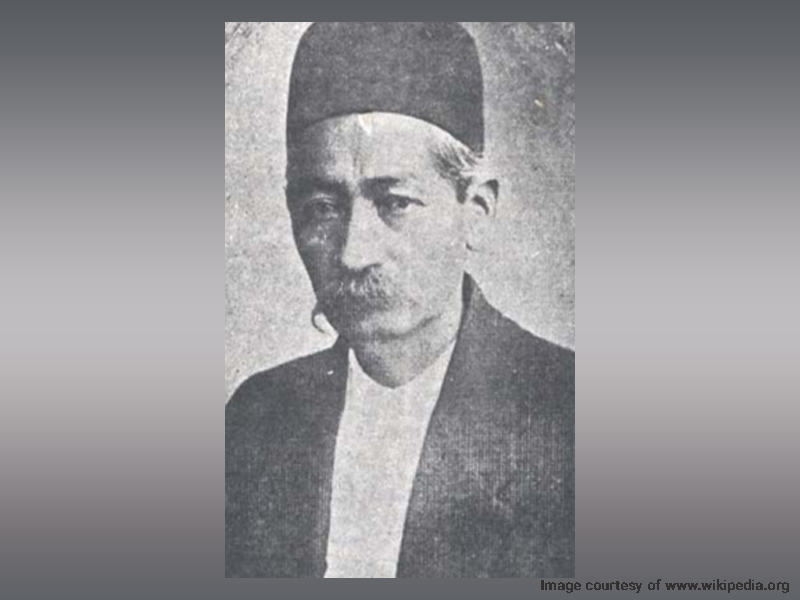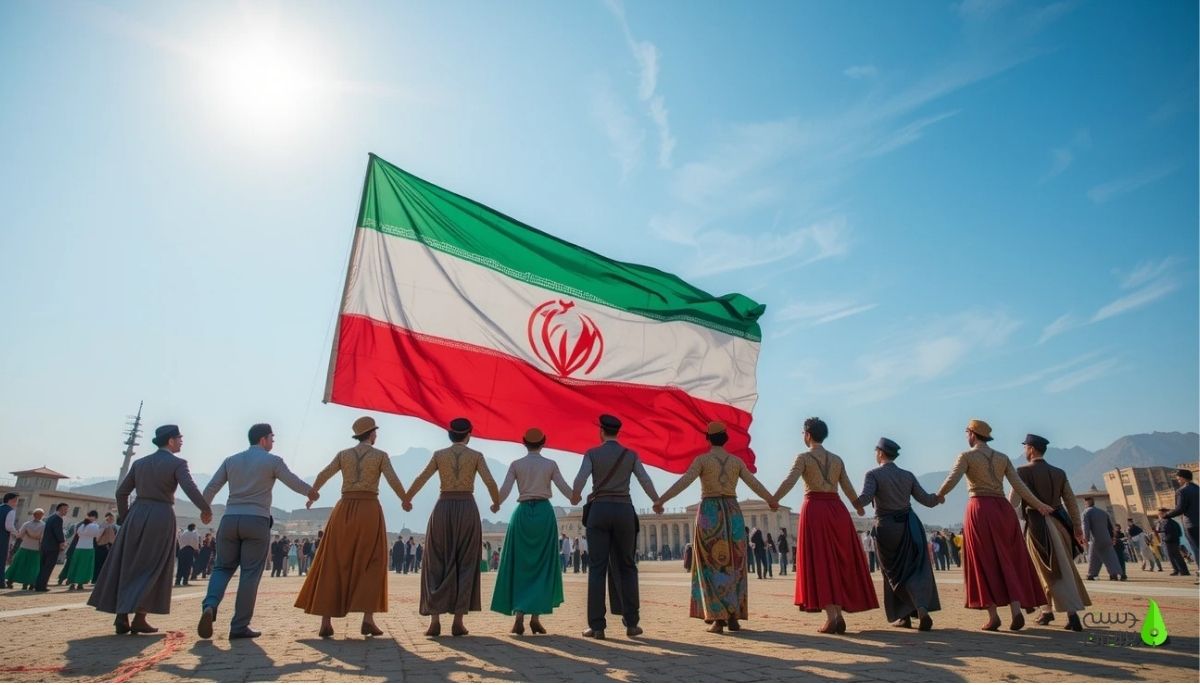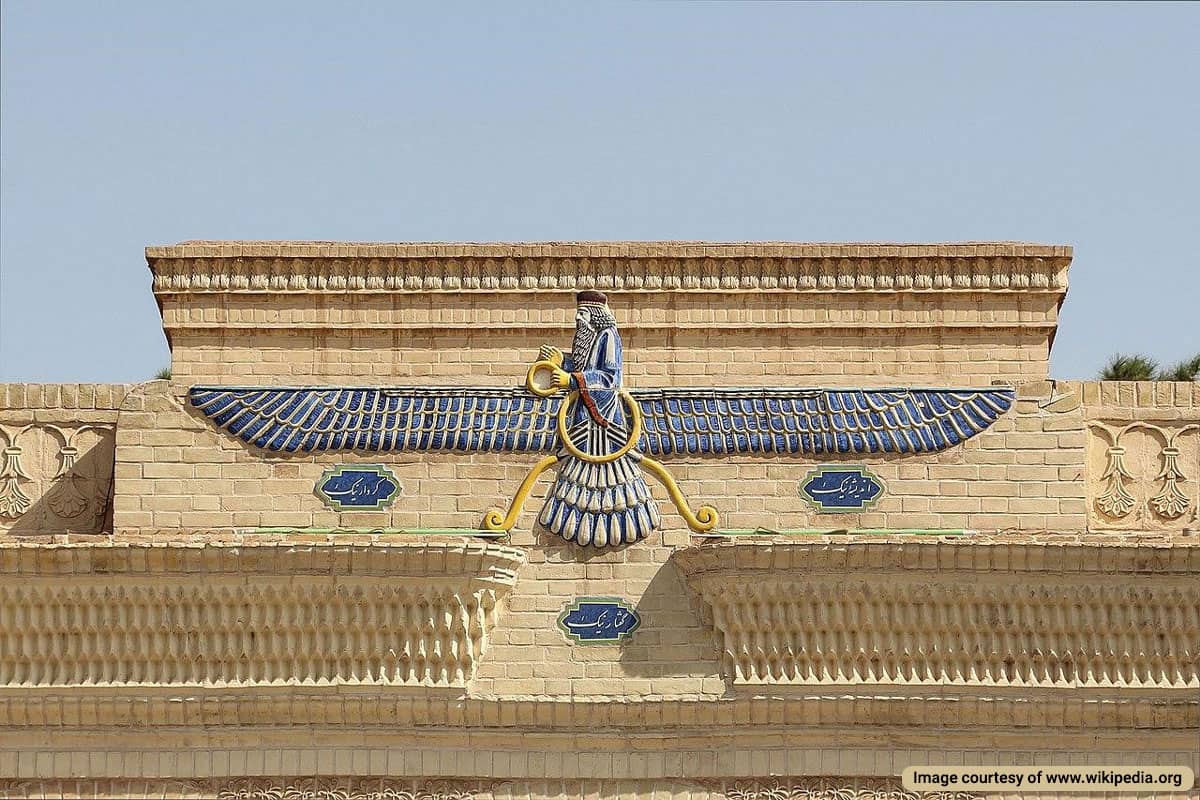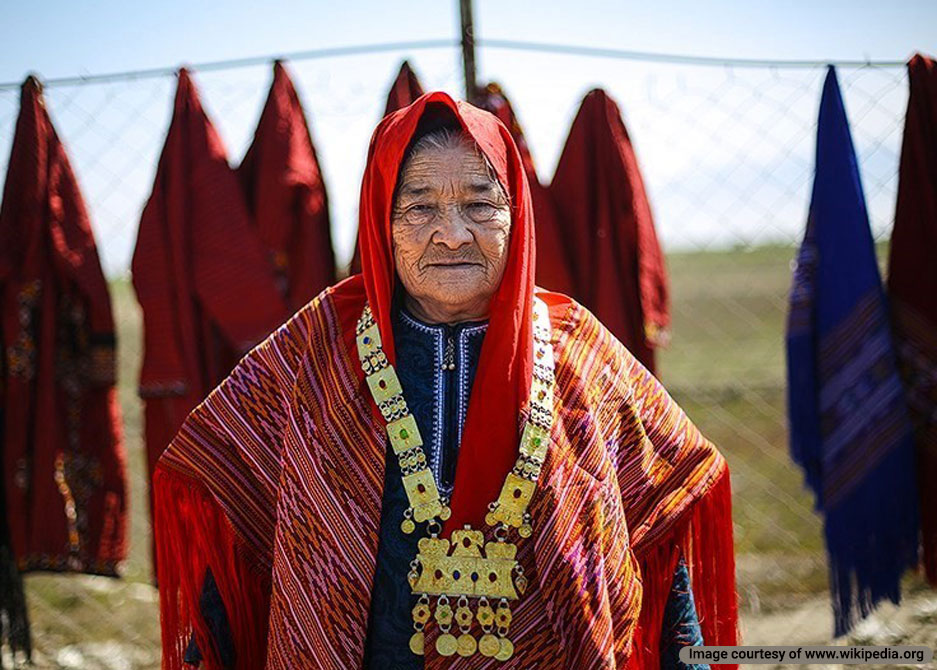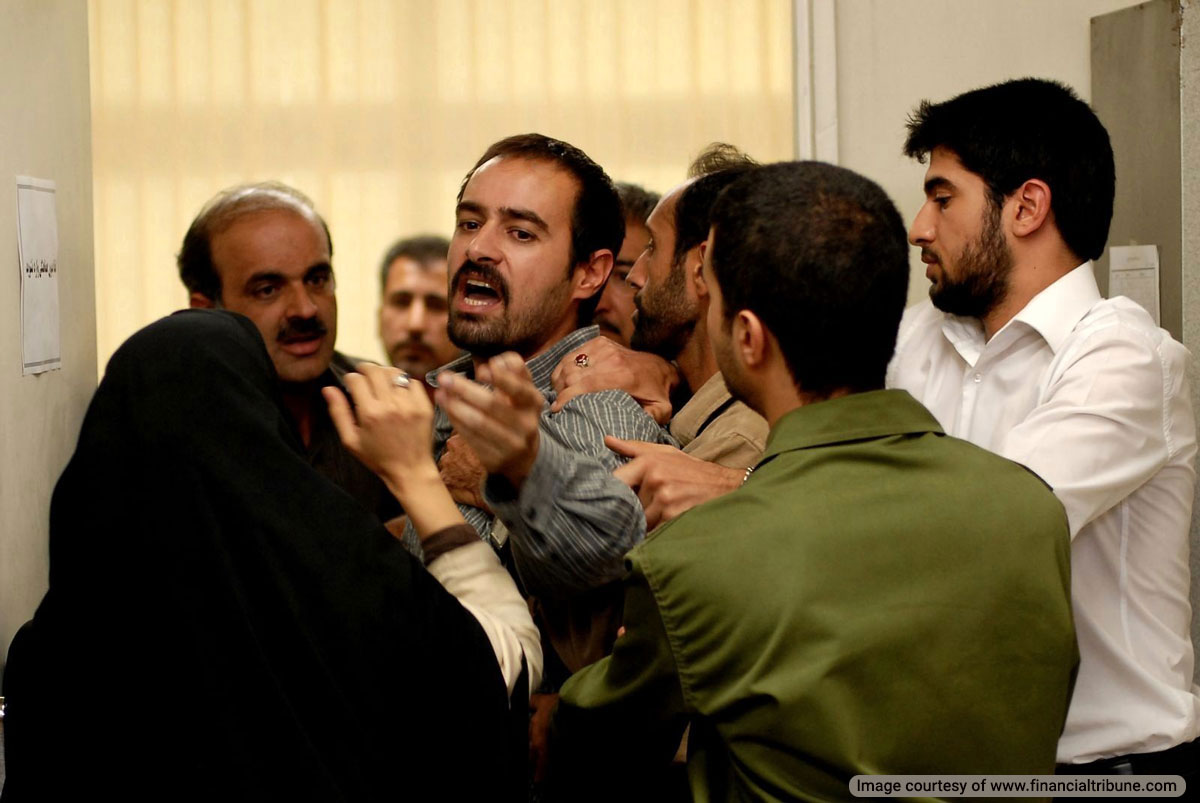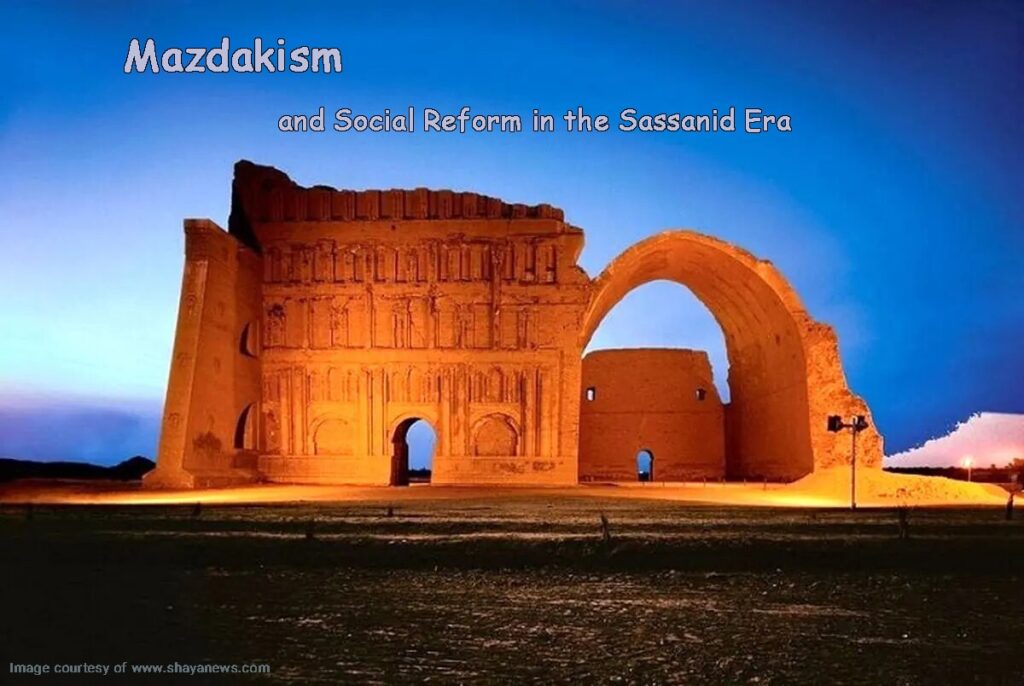
Mazdakism or the religion of Mazdak is considered a social movement based on Zoroastrian teachings and social concepts. This religious socialist movement took place during the reign of Kavad I, the 20th monarch of the Sassanid Empire. According to some other scholars, the Mazdak movement was a demagogic revolution that spread among the masses with the slogan of “establishing equality in ownership of property and real estate”. Here we examine the religion of Mazdak as one of the ancient Iranian religions.
The Name “Mazdak” in Ancient Texts
“Mazdaq, Mazhdak, Mazdaku, and Mazdaka” are other forms of the name Mazdak, but in most of the ancient texts, it is mentioned as “Mazdak”. The name is derived from the word “Mazda” (Wisdom) and is one of the attributes of Ahura in the Avestan language. According to the oldest documents found in the 8th century BCE, three Medes kings were named Mazdak.
Who Was Mazdak in Ancient Iran?
Mazdak was the son of Bamdad and for this reason, he was called “Mazdak of Bamdadan”. He was a religious activist and a social reformist during the Sassanid dynasty. During the reign of Kavad I, Mazdak created a sect or religious practice and promoted it. The religion of Mazdak was based on Manichaeism and especially “Bundus” or “Zaradust-e Khuragen” known as “Zoroaster II”. The sect created by Mazdak was the Zaradust-e Khuragen religion.
The Origin of Mazdak
Regarding the origin of Mazdak, there are completely different opinions, some of which are mentioned below:
According to Muhammad Jarir al-Tabari
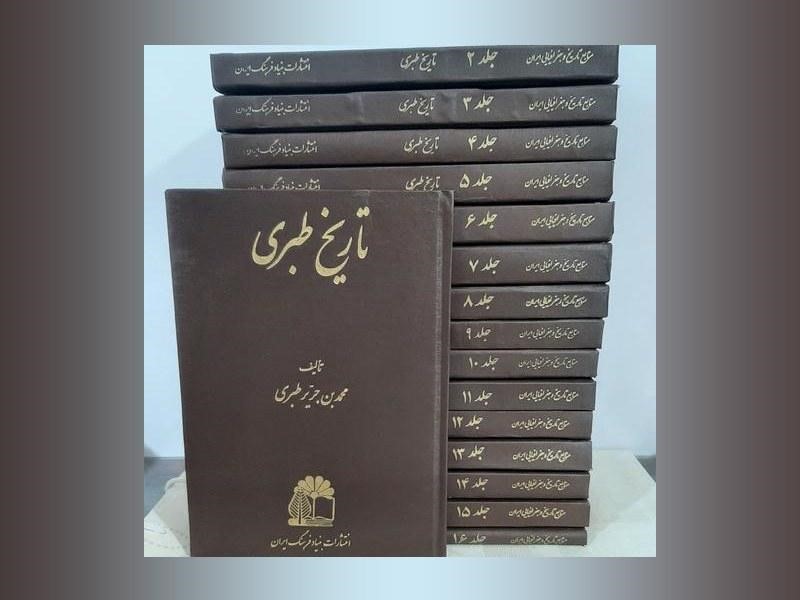
According to Tabari, an Iranian historian and theologian, he was from the city of “Al-Mazaria” or “Mazariya”, located around the Tigris River or “Kut al-Amara”. According to historical documents, Iranian nobles lived in this area until the 9th century CE.
According to Biruni
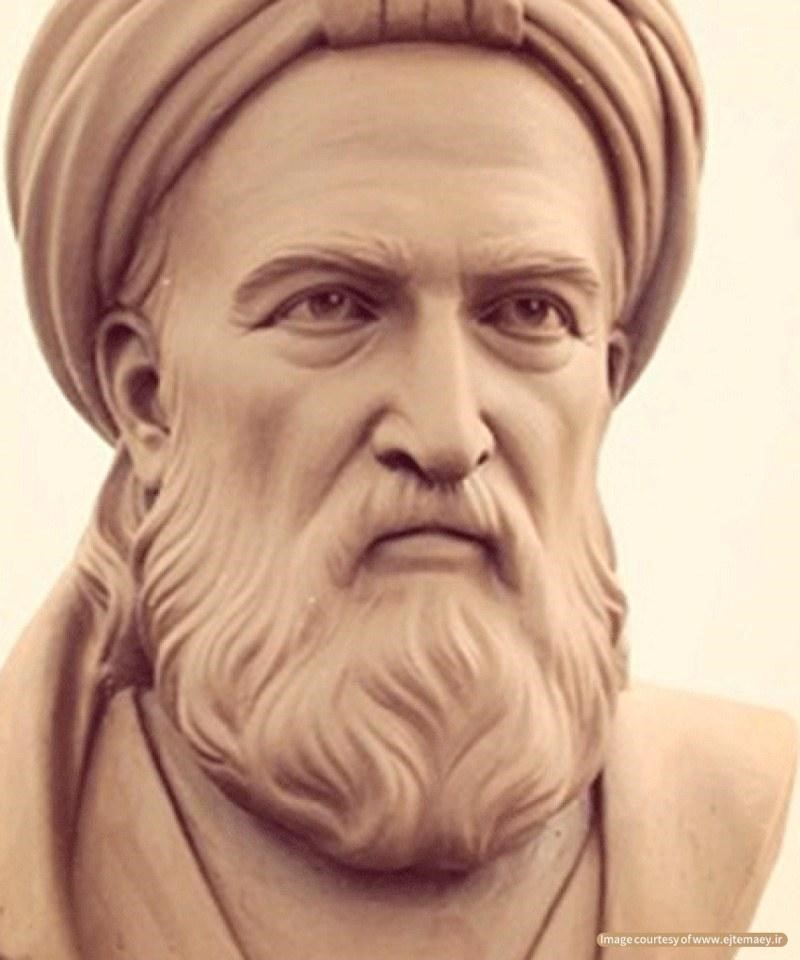
Abu Rihan Biruni, an ancient scientist and historian, considers Mazdak’s place of residence to be the city of “Nisa” in the ancient Khorasan region in modern Turkmenistan. This city was located between the cities of Marv and Sarakhs.
According to Abu Hanifa Dinawari
The Kermanshah-based scientist and historian, Abu Hanifa Dinawari, considers Mazdak to be one of the inhabitants of the city of Estakhr in the ancient Pars region or modern Fars province in Iran.
There are other narratives about the place where Mazdak lived. Some consider him to belong to the ancient Pasa region (modern Fasa in Fars province. Some others have also considered him from the people of Azerbaijan, Nishabur and Khwarazm.
Mazdak’s Mannerism
According to the documents in history, Mazdak was a beautiful, wise, pious, and knowledgeable person. He always wore simple clothes and had a pleasant and logical manner of speech. Mazdak never claimed to be a prophet but always introduced himself as a follower of Zaradust-e Khuragen. He loved the public. Iqbal Lahori calls Mazdak “the populist prophet of ancient Iran”.
The Emergence of the Mazdakism
The “Mazdaki Movement” was founded by “Zaradust-e Khuragen or Bundos”, one or more Mobad (Zoroastrian clerics) from Pasa city. Zaradust-e Khuragen’s followers were called “Zaradeshtegan” and his sect was called “Dorist Dinan” or “Dorost Dinan” (people who had a righteous religion). According to some researchers, the origin of the Mazdakism movement is more Zoroastrian than Manichaeism. There is a suspicion that this movement was created to popularize Mazdakism and spread it in the lower classes of society.
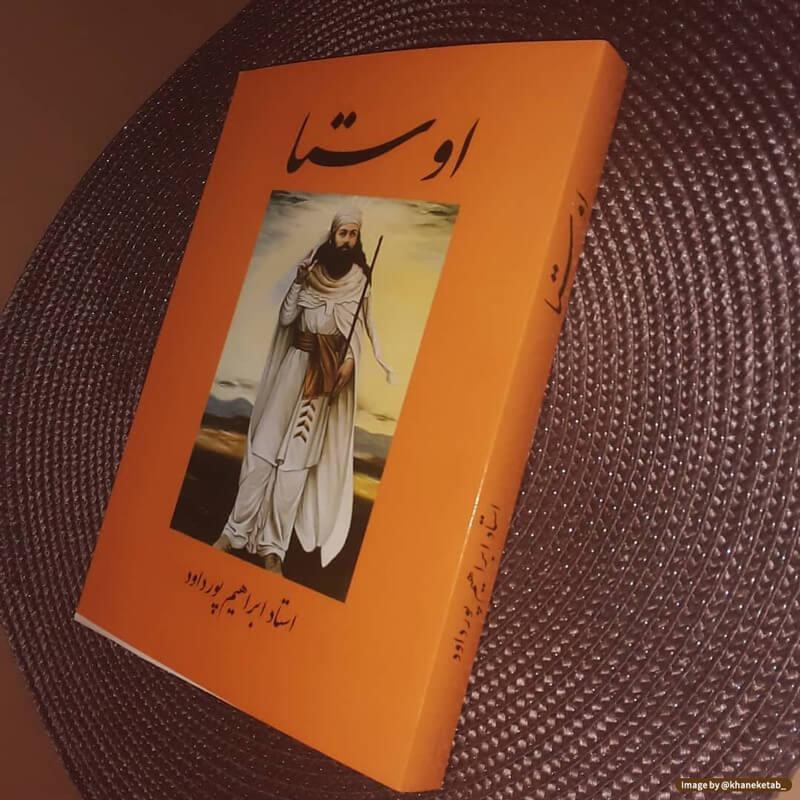
Of course, in the current Avesta text, there is mention of equality in wealth, wisdom, and women. The confirmation of this claim is found in the fourth Vendidad of the Avesta:
“If co-religionists, brothers and friends ask for money, a wife or wisdom, the one who wants money should be given money, the one who wants a wife should be given a wife to marry, the one who wants wisdom should be taught the Holy Word”.
Ibn al-Nadim also considers Mazdakism to be a Zoroastrian sect whose founder ordered:
“Let his followers enjoy worldly pleasures, refrain from overpowering each other, share in the enjoyment of women and family and…”
Ancient Iran Before the Rise of Mazdakism
The social conditions of ancient Iran were highly influential in the reception and expansion of Mazdakism. It should be noted that the development of urbanization in Iran at that time, especially the development of the city-state of Madain, caused a class division. Therefore, at the height of this movement, a divide was created between the nobles and the lower classes of the society:
- Aristocratic group: They sought to gain power and tried to surpass each other in this field.
- The lower classes of society: They wanted to reduce the influence of the elite class and did not want to be exploited by them.
Political, Economic, and Social Status of Sassanid Iran
The main source of income of the Sassanid government was agriculture. Peasants were severely exploited. The government’s economic power came from collecting taxes from citizens and seizing tribute. In the meantime, the lower classes of the society always paid more taxes.
In addition, frequent famines caused widespread poverty among the masses. Because of this, people did not want to work on the land and many villagers migrated to the cities.
As a result, land ownership underwent significant changes. In this situation, the conditions were ripe for the emergence of Mazdakism. A religion that stood tall against slavery and exclusive ownership.
Therefore a large group of people, most of whom were farmers, joined this movement. It is worth mentioning that the economic conditions of the Sassanid government at that time were so dire that it requested a loan from the Byzantine government. Later, due to the deterioration of the economic situation, Kavad I was dethroned and imprisoned for some time.
Religious Status of Sassanid Iran
To prevent Roman encroachments and facilitate trade conditions, the Sassanids demanded internal unity in the political, religious, and military aspects. The tradition of unification of state and religion could help the Sassanid government regain power. Sassanid kings relied on this tradition and introduced and supported Zoroastrianism as the official state religion from the very beginning.
Based on the “Kartir” or “Kardyr” inscription in Naqsh-e Rostam, this high-ranking Zoroastrian priest witnessed the reign of seven monarchs of the Sassanid dynasty and the popularity of various belief systems. Nevertheless, the Sassanid kings tried to promote Zoroastrian religion throughout their empire. Priests like Kartir oppressed religious minorities.
The King-Priest Social Role
As a result of the luxurious status and complex ceremonies in the Zoroastrian religion during the Sasanian era, the social role of Shah-Mobad (King-Priest) gained a special value. Following this important role, the priests also rose to an important position. They interfered in the lives of ordinary people. Their power grew to the extent that the religious influence overshadowed royal authority.
In this way, religious leaders exploited people under the guise of religious rituals. Also, Zoroastrian religious centers were wealthy, but religious authorities opposed any kind of construction activities.
The Status of Women
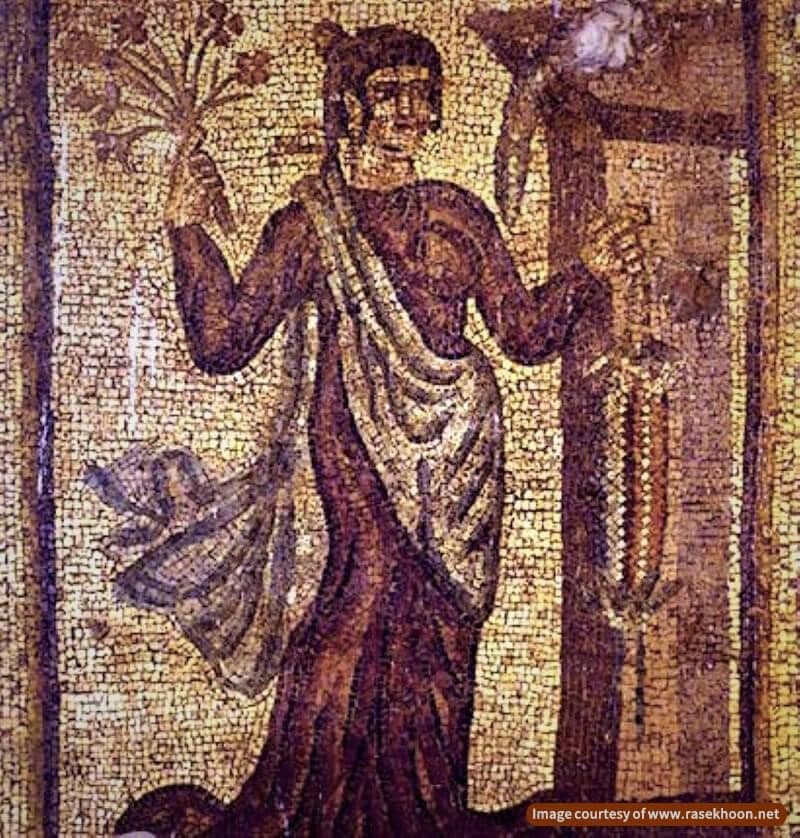
According to legal texts and documents related to the social regulations of the Sassanid government, men could have multiple wives without any restrictions. Since the noble class could have multiple wives, the practice of polygamy was often common among them. According to this law, nobles and elders could have a harem for themselves. These harems were known as “Shabestan”.
The greed of nobles caused a shortage of women in Sassanid society and led to dangerous riots. To the extent that Sassanid kings tried to solve this problem by relocating female prisoners of war. For example, during the war with the Byzantine government, Kavad transferred many women who were prisoners of war to Iran.
This slavish status of women prevailed in this period. During the Sassanid rule, women were always under the control of their fathers, husbands, and in case of their death, by their successors. During this period, the marriage of girls at the age of 15 was compulsory.
The Concept of Sharing Women in Mazdakism
Nizam al-Mulk Tusi, the influential vizier of two Seljuk kings, wrote the following regarding the issue of sharing women in the Sassanid era:
“Mazdak said that wealth is to be endowed among people who are all servants of God Almighty and children of man… He said that your women are yours, you should consider women as each others’ so that no one is deprived of worldly pleasures and lusts…”
Also, Eutychius of Alexandria (Saeed Ibn al-Batreeq), a Christian historian and physician, wrote the following regarding Mazdakism beliefs:
“Whenever someone’s property, women, servants, and belongings are extra (redundant), we take what is extra and share it equally with others so that no one is more privileged over another…”
Ambiguity in the Concept of Sharing Women
According to what was said, it seems that Mazdakism intended for men with multiple wives to share the extra women. According to Zoroastrianism rules, nobles could marry only one woman. Therefore, the other women were illegally kept in their harems. According to some scholars, Mazdakism meant to confront the noble harems and organize the chaotic status of marriage in the Sassanid society.
Matrilineality in Mazdakism
In Zoroastrian society, it was tradition to trace and recognize kinship through the male lineage, and it was believed that Matrilineality would make the real lineage of children unknown. While in the religion of Mazdak, contrary to the teachings of the Zoroastrian religion, there was a belief that children are descended from the mother.
Mazdak sought to fortify the concept of family. Some believe that in Mazdakism traditions, a man who did not have a son could marry his wife to another man to give him a son.
Mazdak’s Mobad-e Mobadan Status
In some historical sources, Mazdak is mentioned as “Mobad-e Mobadan” (High Priest). Mobad Mobadan is the highest religious authority in the Zoroastrian religion. People like al-Biruni called him Mobad-e Mobadan and Ghazi al-Qozzat (similar to Chief Justice). However, according to some historians, during the Sassanid era, Mobad-e Mobadan could not hold the position of chief justice at the same time. The reason for this was that Qazi al-Qozzat was considered a royal official, while Mobad-e Mobadan was a clerical official.
On the other hand, if Mazdak had the position of the high priest, other Zoroastrian leaders and priests needed to follow his lead. While the Zoroastrian clergy were constantly disobeying his orders. What seems logical is that Mazdak had the position of a grand advisor to Kavad. Also, on the other hand, he was the leader of a sect that the then-king followed for a while.
Mazdak’s Teachings
Mazdak teachings are generally divided into two categories:
- Focusing on improving the social and economic conditions of the masses and also restoring their basic rights.
- Providing moral teachings to people and guiding them to the path of righteous beliefs.
It is also necessary to mention that the basis and framework of Mazdakism were formed from Zoroastrianism. The early Zoroastrian religion was very different from the Zoroastrian religion in the Sassanid era. According to some historians, the Sassanid era’s religious leaders had greatly distorted Zoroastrian concepts for their personal and corporate benefit.
Mazdak’s teachings specifically mentioned the following:
- Harming others and murder was forbidden.
- Slaughtering animals and consuming their meat was forbidden.
- Doing good deeds is considered a duty.
- Believing that there is a possibility of salvation without performing certain religious rituals and simply by doing good deeds.
- Belief in Zoroastrian teachings about fighting against the demons of anger, evil, destitution, temptation, and jealousy, was also promoted in Mazdakism
- Believing that like the earth where the king of Iran is sitting on the throne and four people, including Mobad Mobadan (the greatest leader of Zoroastrianism), Herbad (minor religious leader or religious teacher), Sepahbad (military commander) and Rameshgar (bard) are standing in front of him, God is also sitting on a throne in a higher dimension.
Mazdakism and Platonism Common Beliefs
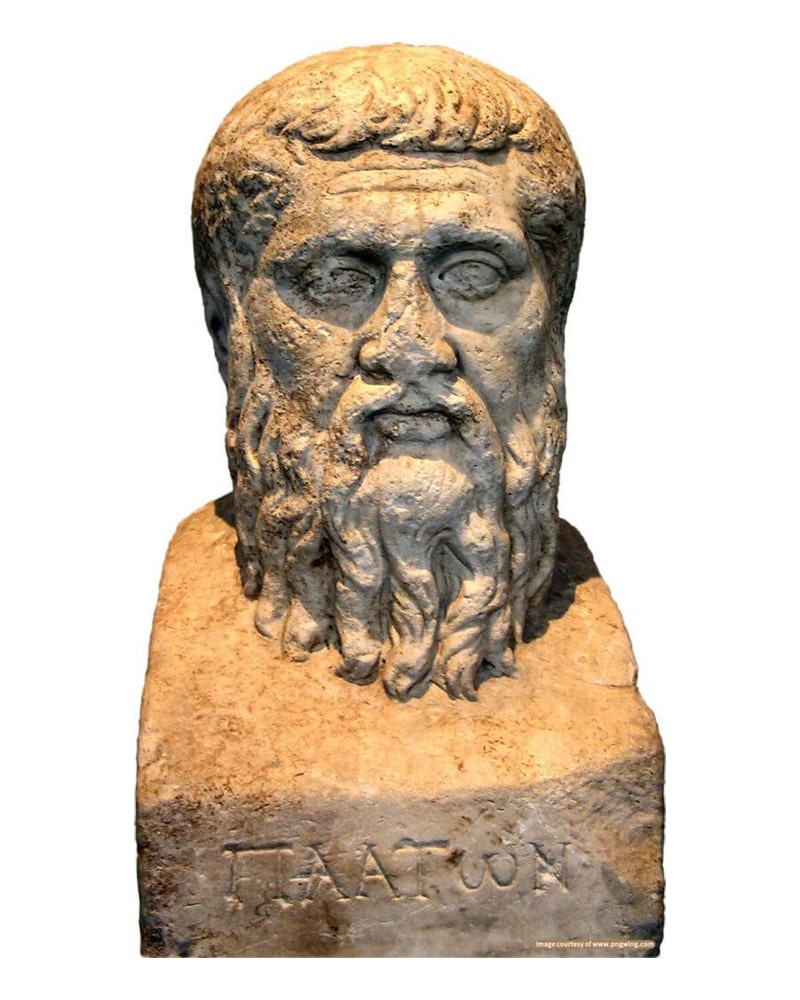
Some scholars consider Mazdak’s teachings to be influenced by Platonism. In the book “Republic”, Plato deals with the issue of Intentional community. Plato, like Mazdak, believed that inequality in human societies causes greed and luxury.
Of course, there are differences between the teachings of Mazdak and Plato. Plato was against sexual relations between the lower and upper classes of society. He even advocated that people from the lower classes should have fewer children so that only the upper-class children were raised.
However, Mazdak did not distinguish between the social classes. After Plato, Mazdak is considered to be the first philosopher who addressed the issue of “sexual politics”.
Mazdakism Philosophy
Based on historical evidence, Mazdakism ideology was formed under the influence of Mani’s ideas and the philosophy of “Zaradust-e Khuragen” or “Bundus”. More precisely, the Mazdak ritual is considered to be derived from the combination of the “Mazdyasna ritual in the Sassanid era” and “Manichaeism”. Among the slogans of Mani’s followers were:
“He who is poor today will be rich tomorrow.”
Although the Manichaeans could not implement this slogan in their teachings, Mazdak made this slogan the basis of his religion. Therefore, Mazdakism was considered to be the religion of Mani that Bundus aimed to promote. Based on historical texts, Bundos created the religious foundation that Mazdak started to promote and was able to attract the masses.
In fact, in the period between the rise of Mani and Mazdak, society became more aware of political-social issues caused by religion. Therefore, in his promotion of enlightenment, Mazdak added social slogans to Manichaeism teachings and met with a positive public reception. Ibn Nadim called Bundos “Old Mazdak” and Bamdadan Mazdak “New Mazdak” in his book “Al-Fihrist”.
Mazdak and Kavad I
Mazdak’s activity started in 494 AD in Kavad I’s royal court. Kavad (Qobad) intended to reduce the influence of the nobles and supported Mazdak and the promotion of his religion. In this manner, the Mazdak supporters formed a rebellion in the city of Madain. With the spread of famine in the country, Mazdak saw the situation as an opportunity to confiscate the property of grain monopolizers in Madain. He made grain available to the people because he sought to ensure equality and justice among the people.
Kavad I’s Role in Promoting Mazdakism
According to the contents of the Shahnameh, Kavad’s conversion to the Mazdak religion led to an increase in the followers of this religion. In addition to propagating this religion in Iran, Kavad also spread the religion of Mazdak in other provinces of Iran, including “Najd ” and “Hijaz ”. Also, Kavad promoted the religion of Mazdak among the ruling class, in addition to the masses. For example, “Kayus” or “Kawus”, who was the son of Kavad and the ruler of Tabaristan, converted to this religion.
Kavad’s Rejection of Mazdakism
In 520 AD, Kavad’s treatment of Mazdak and his followers changed, but the question is, what was the reason for Kavad’s rejection of Mazdak?
In the 9th year of his reign, Kavad was dethroned and imprisoned by the decree of Zoroastrian priests to prevent riots. After some time, he was reinstated to the throne and began to tackle his opponents. During this period, the widespread popularity of Mazdakism created fear in him. As a result, although he did not oppose Mazdak’s followers, he no longer supported them.
On the other hand, there was a difference of opinion between Kavad and the Mazdakites regarding the choice of the Sassanid king’s successor. Mazdak and his followers wanted Kawus to succeed him, and Kavad considered “Khosrow I” a more suitable successor. Mazdak opposed Kavad’s opinion, and on the other hand, the court and priests supported Khosrow I, who opposed Mazdak.
As a result, a war broke out between the two sons of Kavad, “Kawus” and “Khosrow”, and finally Khosrow rose to power. Since the priests agreed with Kavad in choosing a successor, Kavad turned to them and rejected Mazdak.
Mazdak and Khosrow I
Khosrow I believed that the teachings and practices of Mazdak were against the independent monarchy in Iran. He believed that if Mazdakism gained power, there would be no room left for the Sassanid dynasty or any monarchy.
The Massacre of Mazdakism
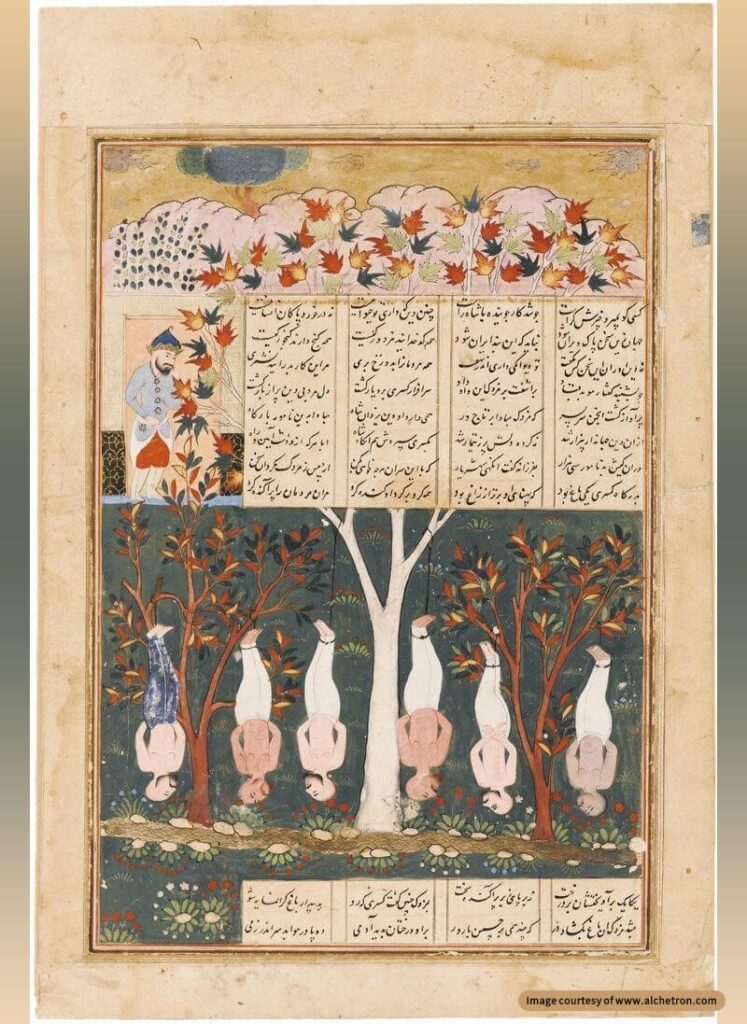
Despite the efforts of Mazdak and Kavad, Khosrow I refused to accept the religion of Mazdak. He asked the Zoroastrian priests to prepare for a debate with Mazdak. If Mazdak lost in this debate, the decision about the fate of Mazdak and the Mazdakites would be out of Kavad’s hands and left to Khosrow.
In this debate, two Christian bishops and some Zoroastrian priests debated with each other and finally proved the illegitimacy of the Mazdak religion. Then, through a plotted conspiracy, Khosrow sought to remove Mazdak and his followers from his kingdom. Therefore, on the day of the Mehrgan festival, he gathered a large number of Mazdakites in a garden and massacred them along with their leader. The number of Mazdakites who were massacred is between 3,000 and 80,000 people.
The Reasons Behind the Failure of the Mazdak Movement
The wave of Mazdakism spread everywhere in a short time and gathered people who dreamed of freedom. At this point, many villagers and elders, who were fed up with the bad conditions of the Sassanid period, dreamed of escaping their exploitation and returning to their previous tribal life.
They found the teachings of Mazdak a reflection of their dreams. However, there was no strong leadership to achieve these goals. On the other hand, Mazdak’s peaceful and idealistic slogans, which promoted non-violence, were another factor in this failure; Because they were not familiar with military techniques to deal with their opponents.
On the other hand, the unity of the opposition groups against Mazdak was effective in the defeat of Mazdakism. As a result of the union of all nobles, elders, priests, and all groups of society, this movement was silenced at the very beginning and all Mazdakites were massacred.
Mazdakites after the Purge
Khosrow I believed that if Mazdak was killed, his followers would flee, disperse in different regions, and invite others to their religion. For this reason, they planned to massacre the Mazdakites.
Of course, after this incident, the remaining Mazdakites gathered openly or in secret in “Ray”, “Azerbaijan” and “Kermanshah”. Ray was one of the rallying centers against Sassanid rule. After his death, Mazdak’s wife fled to Ray and promoted his religion. The people of Ray gave Mazdak the title of “Khoramadin”. For this reason, after Islam, the Mazdakites were called “Khormiya” or “Khoramdinan”.
Offshoots of Mazdakism
After Mazdak was killed and the massacre of Mazdakites, his followers scattered to different places such as the villages around Ray, Bukhara, Isfahan, Hamadan, and Zanjan. In this way, several offshoot sects were formed in the religion of Mazdak, which are:
- Kozdaki sect in Ahvaz, Fars and Shahrzor
- The sect of Abu Muslimiyah or Sanbadiyah
- The Mahianieh cult
Mazdak and Mani
As a result of people’s dissatisfaction with social inequalities and manipulations of the Zoroastrian religion by Sassanid priests, a social platform was provided for people’s reception of Mani. Of course, the rituals of Mazdak and Manichaeism were similar in many ways. For example, in both religions, there was a belief in the principle of “light and darkness”. The difference was that Mani considered the action of light against darkness to be voluntary and considered the reaction of darkness against light to be involuntary.
Therefore, he considered the victory of light over darkness as definitive. Mazdak and Mani, like Zoroaster, believed in “dualism”. Meanwhile, Mani tried to reform society with the help of religious beliefs.
It should be noted that dualism means that the universe is based on the opposition of the two forces of good and evil.
The Impact of the Mazdakism
Although the Mazdak movement failed, it left many impacts. One of the most important impacts of the Mazdak movement was challenging the noble class and clerics of the Sassanid court. By raising the issue of equality in property and the basic right for all people to have a wife, the Mazdak movement was able to rally different sections of society.
The Mazdak movement had other social impacts, which we mention below:
- The ideals of the religion of Mazdak were solidified in public memory for centuries after him.
- An important part of the reforms that Khosrow I made after the suppression of Mazdak was due to the influence of the Mazdak movement.
- Khosrow I tried to make changes in the rural sector and established laws to support the villagers.
- The amount of tribute (royal tax) was reduced. It was forbidden to take tribute from the dead and the lands that were affected by pestilence.
- The right to address the king was given to farmers.
- Farmers were able to keep their surplus crops.
- Khosrow I made reforms in the field of women’s rights and reduced the number from 5 wives to 1 or 2 wives.
- The right to choose a spouse was given to all women as well as slaves.
- The working age was limited to over twenty years old and before fifty years old.
- People who were not in the age group of twenty to fifty years were exempted from paying taxes.
- The status of the cleric was shaken; So the position of Mobad Mobadan was removed from the list of first-rank positions and the non-religious ranks replaced it.
- The nobles also lost their previous status.
Mazdakism in literature
Often in Persian literature, Mazdak has been criticized or neglected, and in most literary societies, he has been considered a symbol of oppression. But there are many references to him in Ferdowsi’s Shahnameh.
Mazdak in Shahnameh
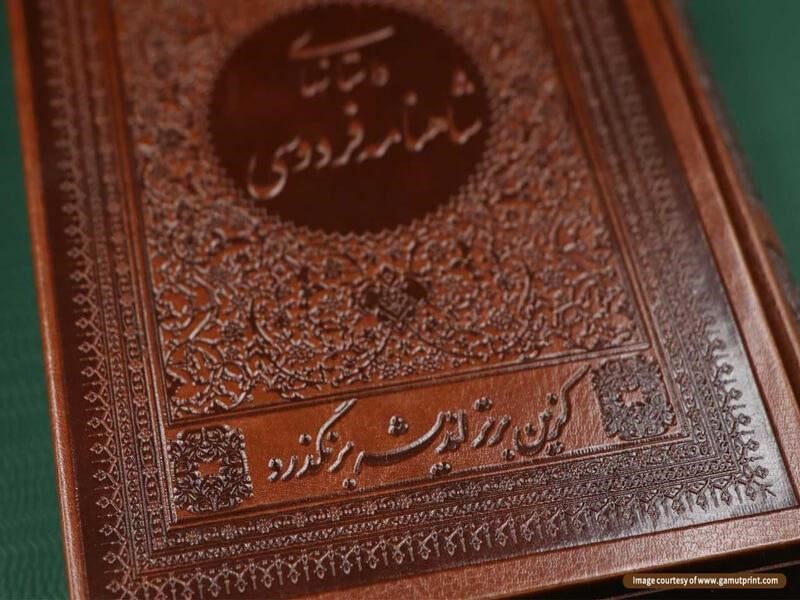
The perception of Mazdak in the Shahnameh, both in terms of structure and details, is very different from other historical sources. The Shahnameh describes in detail how Mazdak entered the Sassanid court. Ferdowsi’s depiction of Mazdak, unlike others, is a reformist, benevolent, and positive image. Nevertheless, Ferdowsi calls him “apostate” and “of bad religion” at the end of Shahnameh.
In various parts of Shahnameh, Ferdowsi mentions Mazdak, which are:
- In describing the historical events of the Mazdak period, such as drought, and grain hoarding by nobles.
- The teachings of Mazdak related to the fair distribution of property and the establishment of social justice.
- Mazdak’s popularity among the people, the spread of Mazdakism, and information about the Mazdak movement.
- It refers to Kavad’s request to Khosrow I to accept the Mazdakism.
- Mazdak’s trial and debate, and incitement of Kavad against Mazdak.
- Explanations about the order to massacre Mazdak and his followers.
- Ferdowsi depicts an image of the scene of Mazdak’s execution in his poems.
Significance of Ancient Iranian Religion and Culture
Learning about ancient religions provides new insight into human intellectual evolution and also the process of the spread of these beliefs in ancient societies. An insight that is valuable for a better understanding of people’s modern beliefs and also prevents the repetition of unfortunate historical events.
For this reason, in addition to paying attention to cultural heritage tourism and tangible cultural heritage, Destination Iran is trying to promote Iran’s intangible cultural heritage. Therefore, we invite you to read more about Mazdakism and get to know the culture and ancient religions of Iran.



